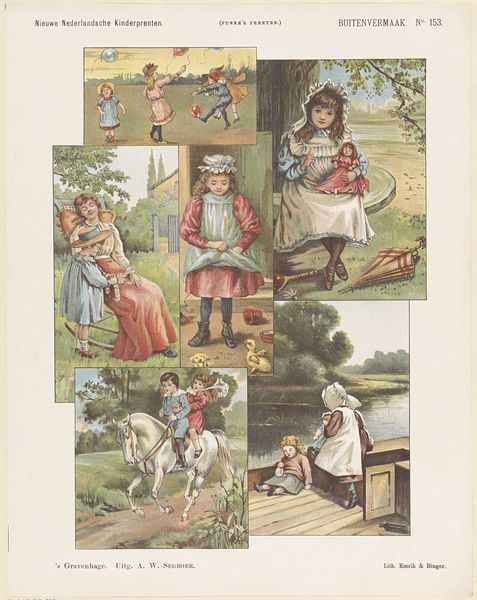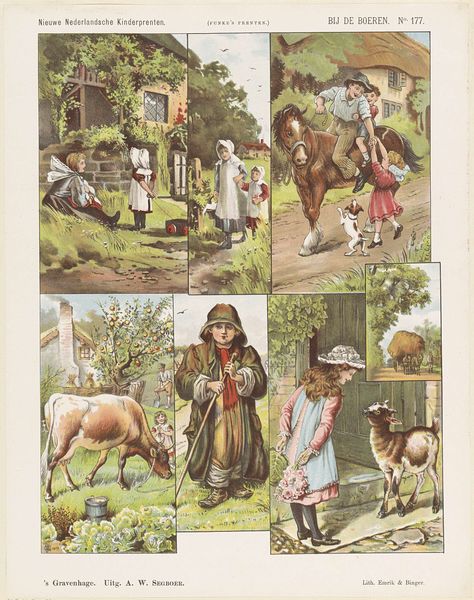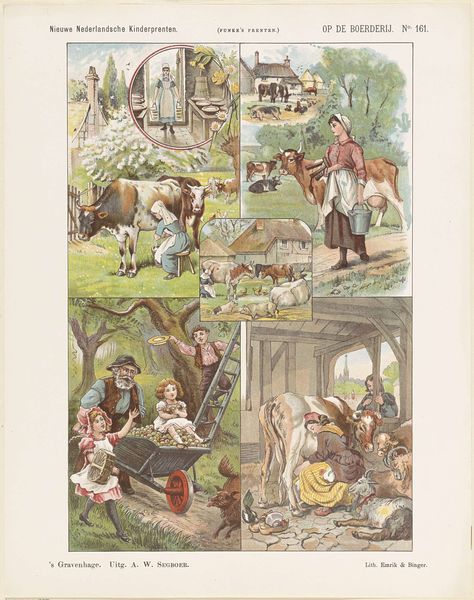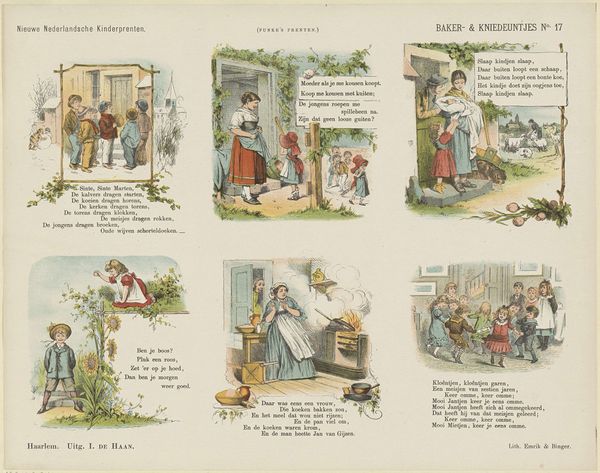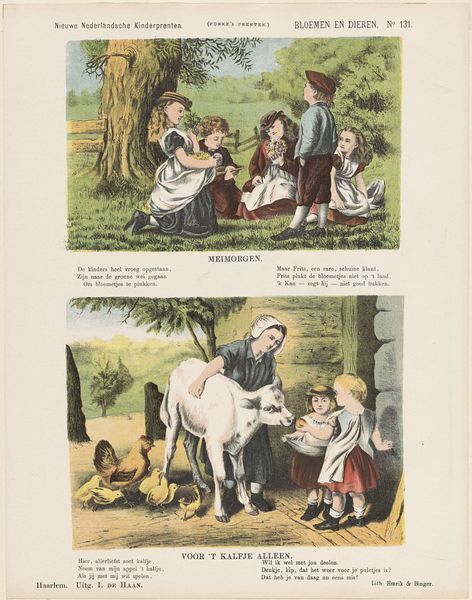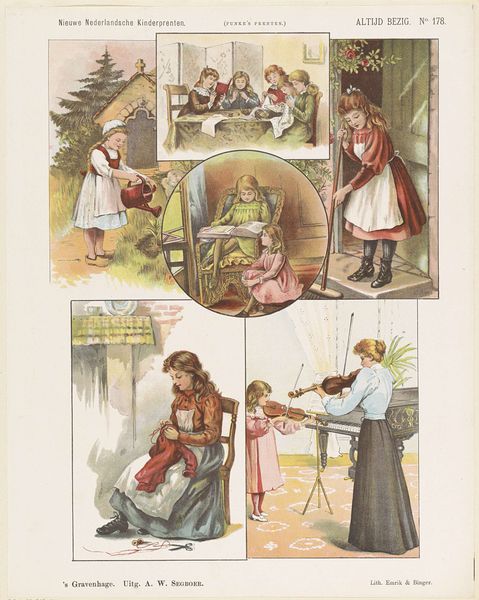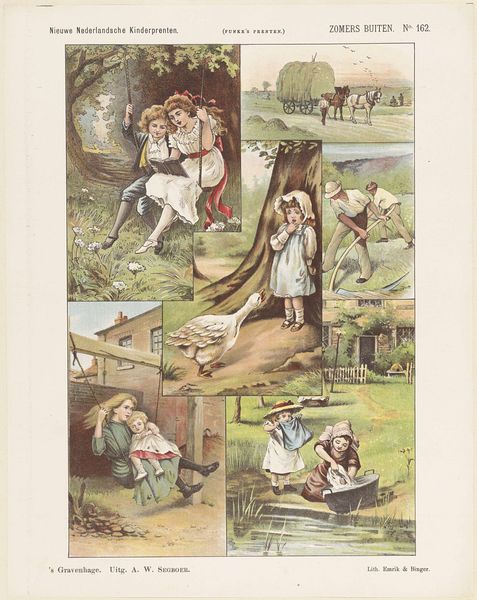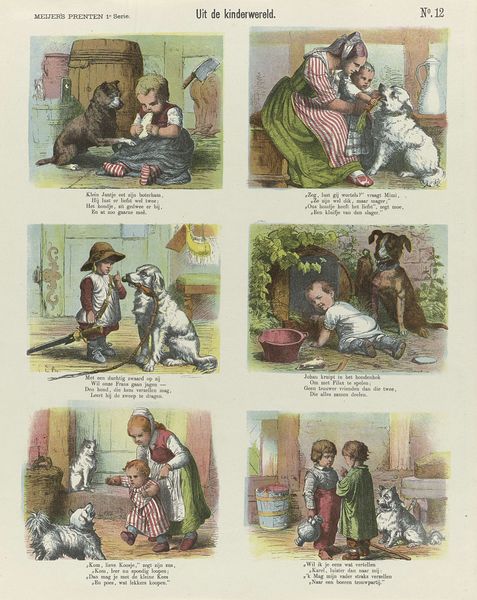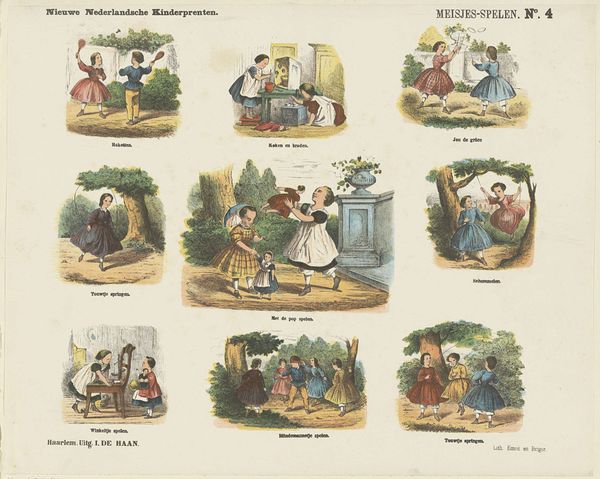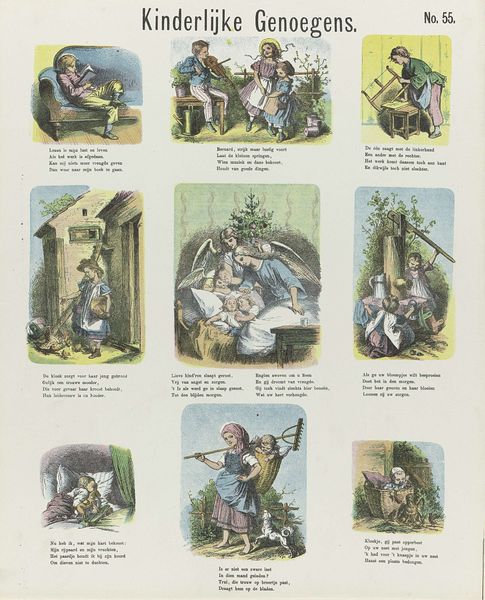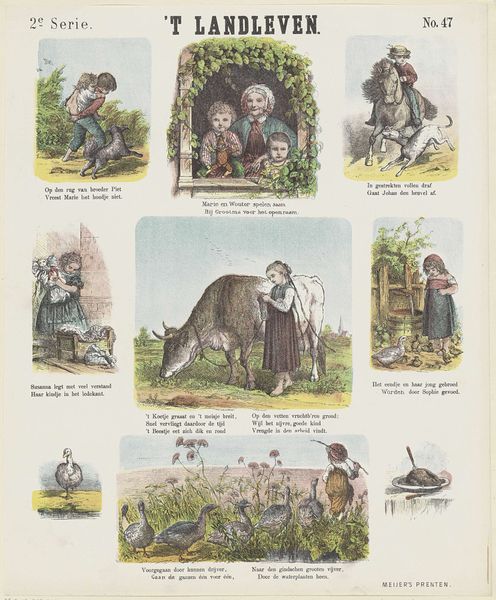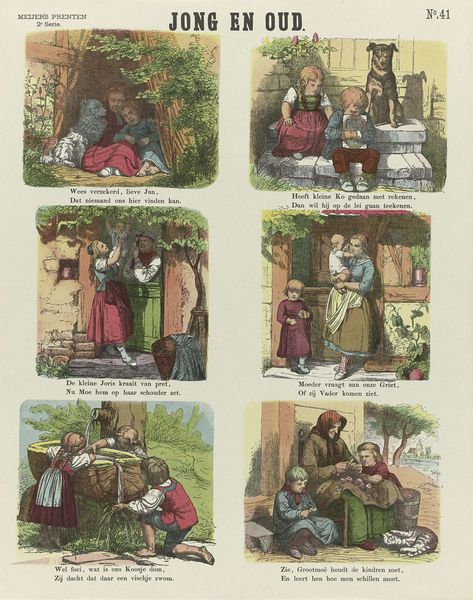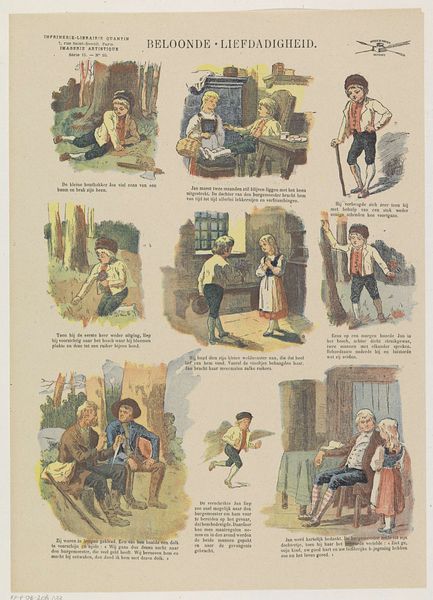
# print
#
landscape
#
child
#
folk-art
#
genre-painting
#
realism
Dimensions: height 440 mm, width 349 mm
Copyright: Rijks Museum: Open Domain
Editor: Here we have Arie Willem Segboer's "Voeding der dieren," which translates to "Feeding the Animals," printed sometime between 1903 and 1919. It's charming, almost like a series of little snapshots of children caring for animals. What do you see in this print? Curator: It strikes me as a deliberate construction of idealised childhood and feminine care. Notice how the children, all girls, are depicted in nurturing roles, literally feeding animals. This reinforces societal expectations of women as caregivers, their identities intrinsically linked to domesticity and service, particularly within that early 20th century context. Editor: That's a great point, I hadn't considered the gender aspect so overtly. Does the setting – the rural, almost fairytale-like landscape – play a part in that as well? Curator: Absolutely. The rustic backdrop serves to naturalize these roles. By placing these girls within a simplified pastoral scene, it suggests that their caring roles are not just a societal construct, but an inherent part of their nature, inextricably linked to the natural world. What isn't seen or acknowledged are any possible aspirations beyond this limited space. Segboer invites the viewer to imagine what kind of cultural capital is produced, and for whom. Editor: It's amazing how much depth there is in what seems at first glance to be a simple, even sweet, image. Curator: Precisely! Art often functions as a mirror, reflecting not just the beauty but also the hidden power dynamics and assumptions of its time. Examining the social and historical framework allows us to critically unpack these images. Editor: I will definitely keep an eye out for such issues from now on. Thanks! Curator: My pleasure, that's why studying the past is essential for us to envision and demand an equitable future.
Comments
No comments
Be the first to comment and join the conversation on the ultimate creative platform.
